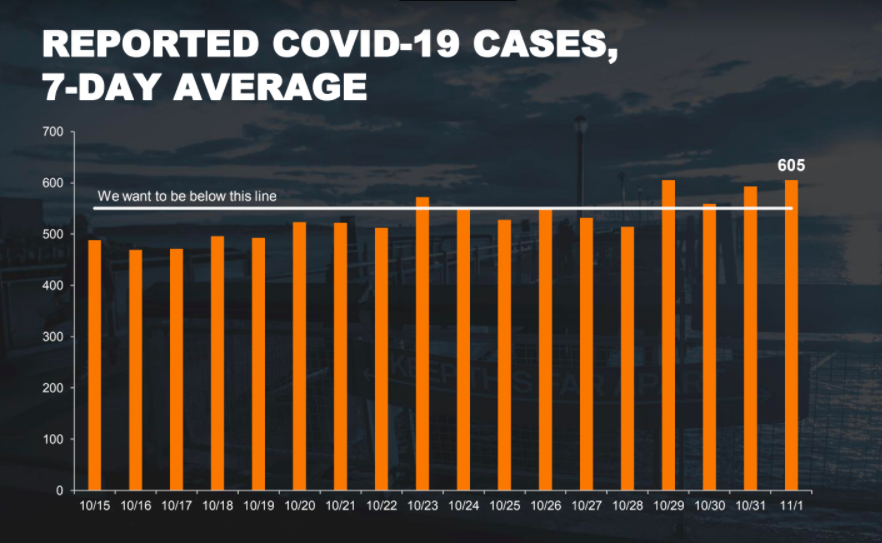Pandemic Numbers: Exceeding One Threshold, Testing Affluent Areas


Todays numbers: 83 patients with a confirmed positivity level of 31% percent admitted to hospitals. Positivity is higher than in recent weeks. New reported cases on a seven-day average is past the threshold of 550 cases for the fourth straight day – at 605 cases. The seven-day rolling average for COVID19 infection rate among those tested – 1.6%.
Brooklyn numbers from NY State: 15,312 people were tested, 217 were positive, 1.4% positivity rate. 7 day positivity rate is 1.6%.
Red Zone and Yellow Zone data:

When Errol Louis asked the Mayor Bill de Blasio on Inside City Hall what his public health experts are telling him exceeding this threshold of 550 cases means and what will it mean if we can’t get the number back down, mayor said something that won’t help us understand it either:
“It’s not where we want to be. It’s not horrible either. It’s much better than most of the country.”
Testing, however, remains uneven across the city. The more affluent the neighborhood, the more testing is taking place, while the infection seems to be concentrated in the less affluent areas that also are not testing as much. That has been the case since we first reported on in earlier this year, and something NYTimes picked up on a few days ago.
Senior Advisor to the Mayor Varma explained during today’s press conference that: “We can’t correct you know, decades, or if not centuries of inequality, where there may be people in wealthier areas that are actively seeking out more testing over time. But we have intentionally put our resources into the places so that people who have higher degrees of vulnerability or less economically advanced can get those.”
He also sugegsted that this testing data was just one data point among many:
“This is just one part of many different data points, and the fact that we have been able to collect this data at very, very high levels across every neighborhood – it has proven very good at helping us to identify areas of higher versus lower transmission.”
Commissioner Dave Chokshi, Department of Health and Mental Hygiene, said that the administation has gotten a lot more nimble when it comes to targeting the hyper-local testing:
“We’ve added a host of more mobile testing options, whether it’s a mobile testing van or pop-up sites that we can bring to areas that have a higher rate of cases or lower rates of testing or partnering with community physicians to actually give them the testing supplies, the testing kits that they need. So that’s given us a layer of, of being very nimble with respect to pushing our testing resources where they need to be on a day-to-day and week-to-week basis.”



